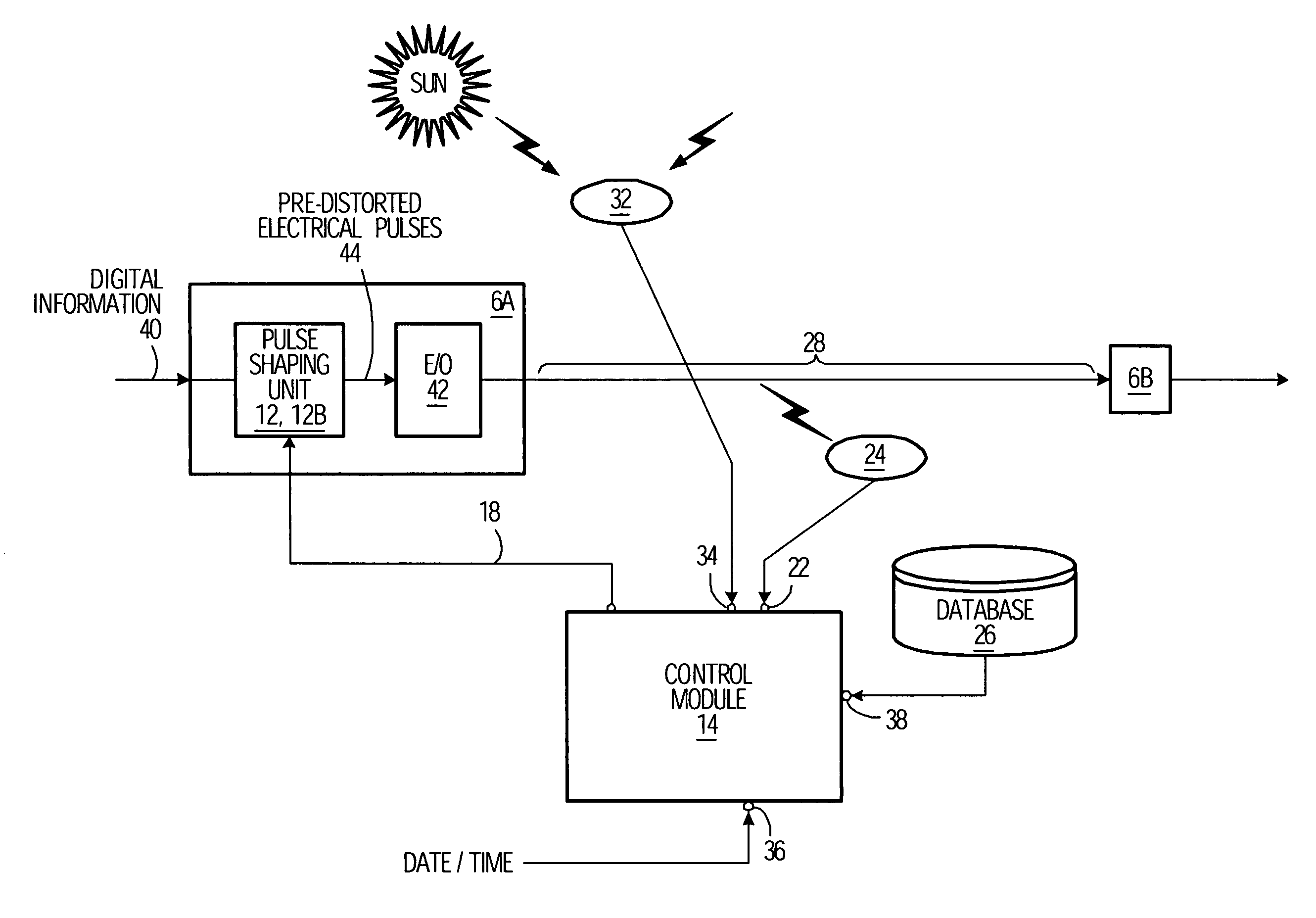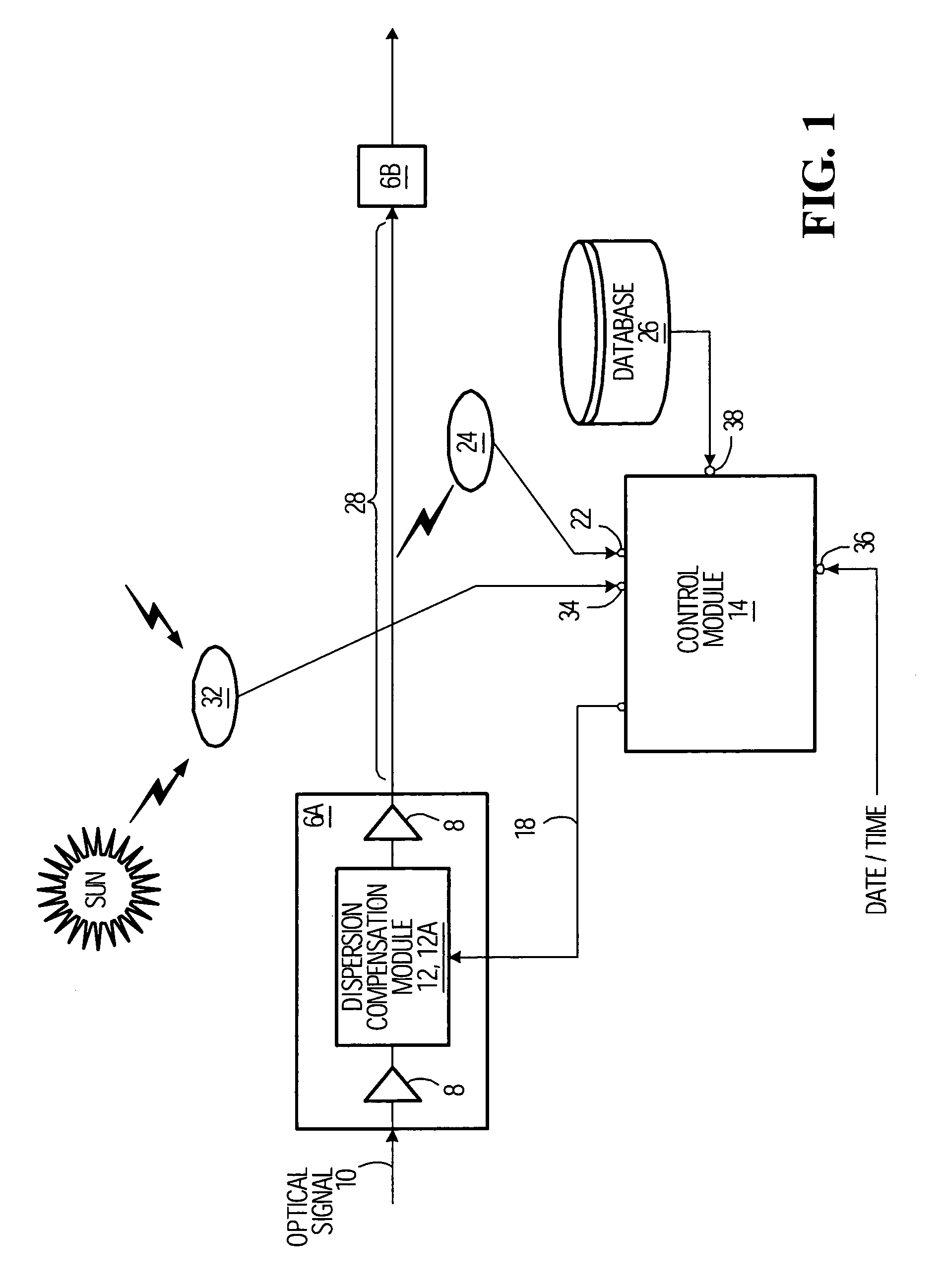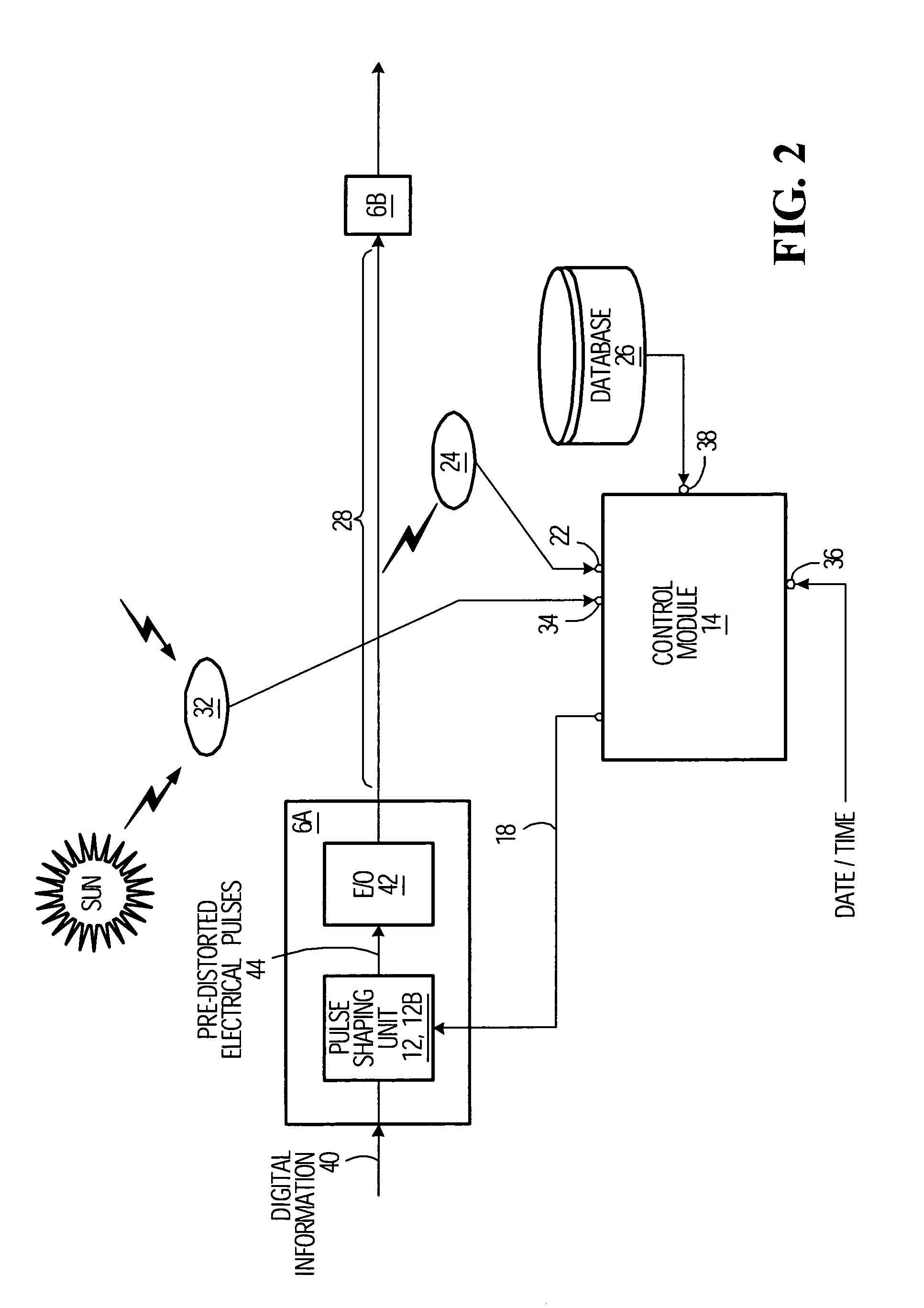Compensation of temperature-induced dispersion drift in optical communication links
a technology of temperature-induced dispersion drift and optical communication link, which is applied in electromagnetic transmission, electrical equipment, transmission, etc., can solve the problems of net dispersion drift at the receiver, the change of the dispersion of the optical plant fiber in the ground (or in the air), and the net dispersion drift across each span as well as at the receiver. , to achieve the effect of reducing the distortion margin in the optical link budget, reducing the net dispersion drift affecting the optical
- Summary
- Abstract
- Description
- Claims
- Application Information
AI Technical Summary
Benefits of technology
Problems solved by technology
Method used
Image
Examples
Embodiment Construction
[0018]The dispersion experienced by an optical signal as it travels along an optical path (e.g., a span of optical fiber) is a quantity that is normally expressed in units of picoseconds per nanometer (ps / nm) and which is itself a function of the wavelength, denoted λ.
[0019]Mathematically, the dispersion is the derivative of the group delay with respect to wavelength which, when plotted against wavelength, results in a curve that may be nonlinear. Moreover, it has been observed that the dispersion of an optical signal, at wavelength λ, also varies with both the temperature of the fiber (denoted TF) and the length of the fiber (denoted LF) through which the optical signal propagates. For the sake of notational convenience, the dispersion at wavelength λ experienced by an optical signal that travels an optical path when the latter has a temperature TF is hereinafter denoted DF(λ; TF). In practice, it has been observed that DF(λ; TF) can usually be expressed as:
DF(λ;TF)=(dF*LF)+(KF*LF*...
PUM
 Login to View More
Login to View More Abstract
Description
Claims
Application Information
 Login to View More
Login to View More - R&D
- Intellectual Property
- Life Sciences
- Materials
- Tech Scout
- Unparalleled Data Quality
- Higher Quality Content
- 60% Fewer Hallucinations
Browse by: Latest US Patents, China's latest patents, Technical Efficacy Thesaurus, Application Domain, Technology Topic, Popular Technical Reports.
© 2025 PatSnap. All rights reserved.Legal|Privacy policy|Modern Slavery Act Transparency Statement|Sitemap|About US| Contact US: help@patsnap.com



